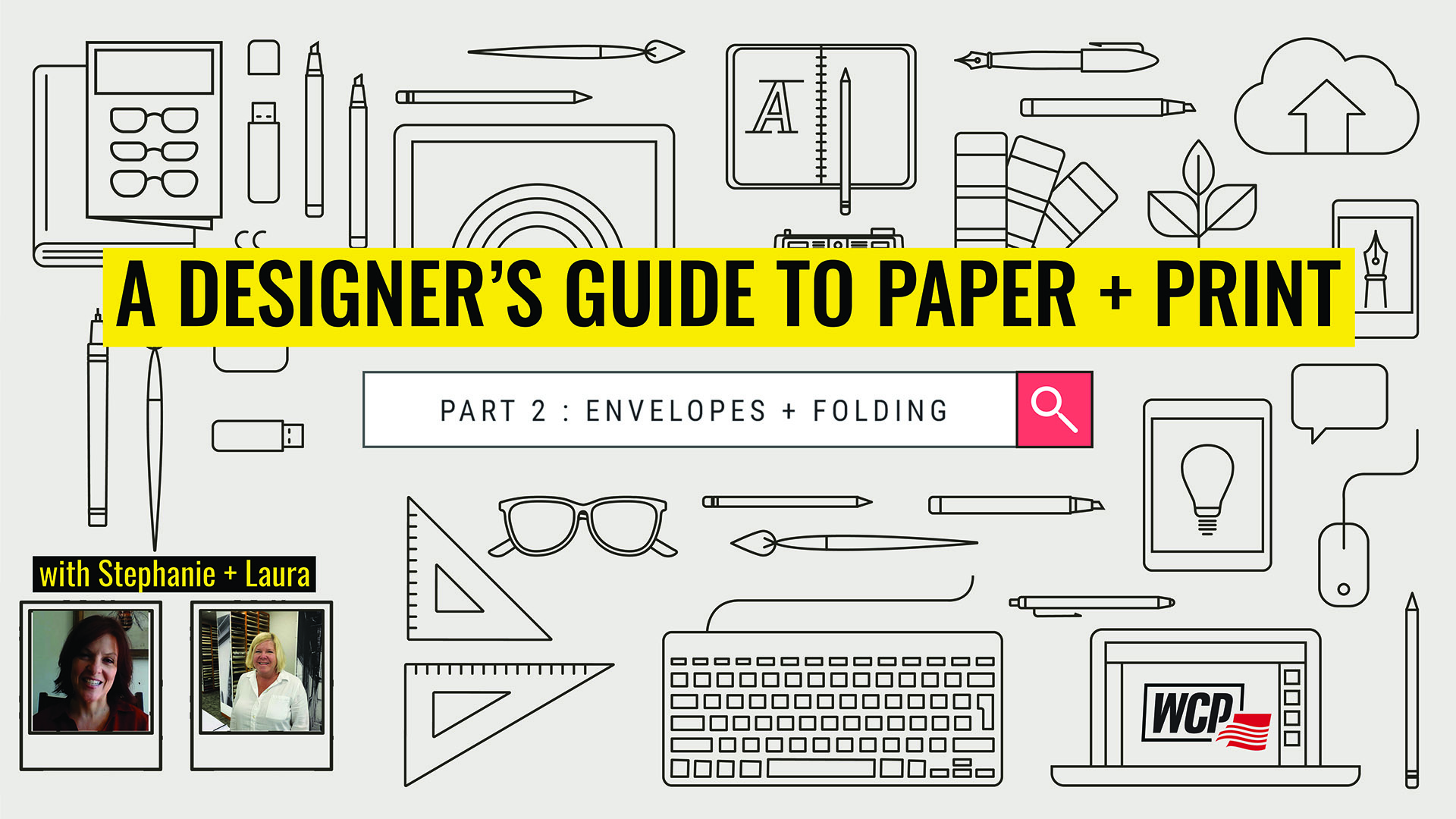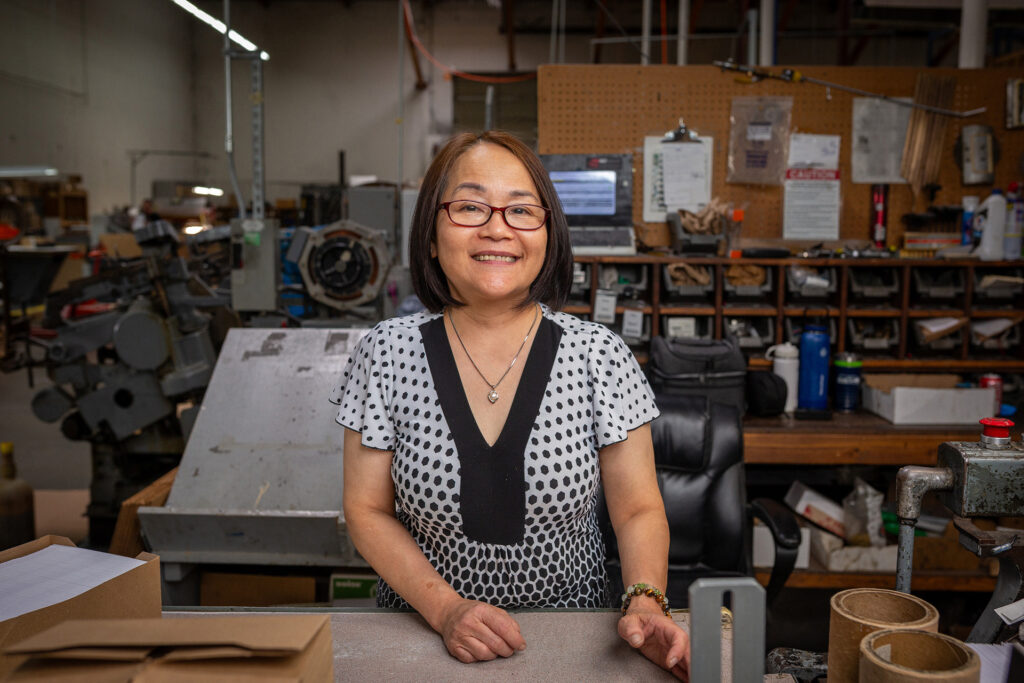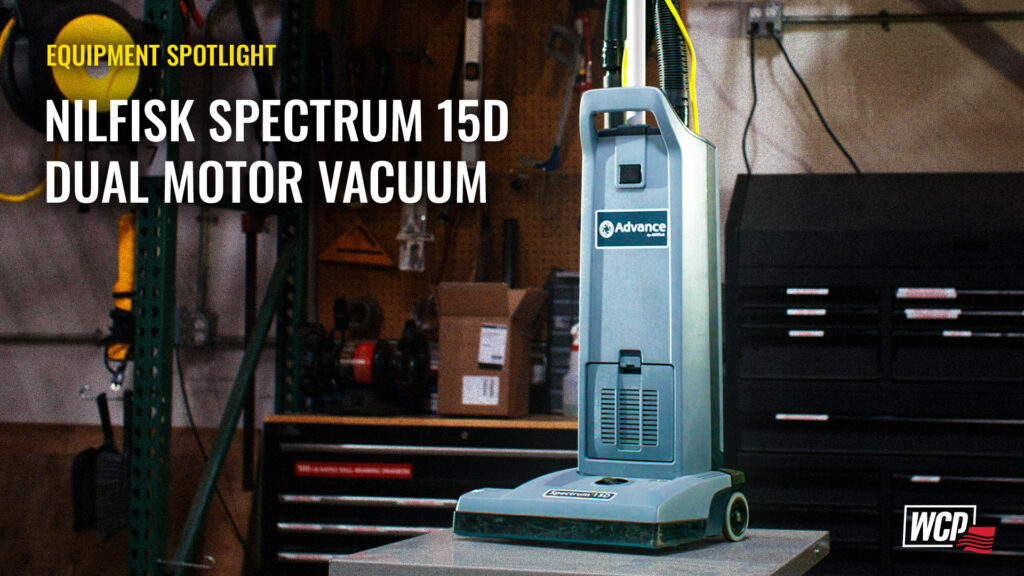A Graphic Designer’s Guide to Paper and Print: Part 2 – Envelopes and Folding
We love working with local designers to help them create the perfect piece for their clients. We often get a lot of frequently asked questions from the designers in our community about paper and printing and we’ve created a new series to help answer some of those often asked questions. With help from Stephanie, a sales manager in our Kent office and Laura, a paper specialist in Portland, we’re answering all of your questions in a three-part series. Today, we’re discussing the questions we hear about Envelopes and Folding and everything you might need to know.
All About Envelopes
Stephanie says…Choosing the right envelope for your project should be done at the beginning of your project. Unfortunately, we often see situations when the envelope isn’t chosen until files are ready to hand off and sometimes an entire project has been designed and approved only to discover it won’t fit into a standard-sized envelope. Other times the designer is disappointed to find out the colored envelopes they had their heart set on aren’t available locally.
As a general rule, you’ll be able to readily find white envelopes in #9 and #10 business sizes, some catalog and booklet sizes, and some announcement sizes. If you are looking for a color or size outside of those parameters, some planning will need to be done. Envelopes can be custom manufactured for your project or you may be able to find what you need from the mill. To make sure you get exactly what you want, be sure to reach out to your print sales representative and your Account Manager at WCP, early on during the design phase of your project. That will give you the necessary time to get what you want and open up a whole world of opportunities for colors, finishes, and styles, that still fit within your budget and deliver your project with the wow factor you are looking for.
Are Envelopes Readily Available
Laura says… Envelopes for a small project are always a challenge. At WCP, we have an envelope division that actually has capabilities to do smaller runs of custom colors in papers that we stock or that we can get through any of our manufacturers. This can be an excellent source if you’re looking for 1,000 or more colored envelopes. WCP Envelope can make basic envelope sizes for business and announcements (everything from A2 to A10). There is also an adjustable die that is used to create custom sizes that may be used for mailings or packaging for a client. The substrates can be anything from a Classic Crest Solar White Woodgrain to something really fun and colorful like an Astrobright Fireball Fuchsia Pink. WCP Envelope can also convert specialty papers for catalogs and booklets that require larger size envelopes.
No matter what you need, we’re here to help. If you need something with a quick turnaround time, take a look at our website to see our collections of envelope sizes that we have readily available. We stock everything from padded mailers, to Classic Crest, to textures of Laid and Linen, to Earthchoice colors, and Superfine Eggshell.
All About Folding
Stephanie says… Creating a folded marketing piece is a great way to create excitement around a project. Printed projects are typically designed to be folded to solve a problem with real estate on the paper — it’s a great way to fit a lot of information onto a single piece. But folding can also create a visual impact that makes your project both memorable and functional. Before turning to a standard 3-panel fold for that brochure you’re designing, you might want to check out some new ideas in terms of folding. One of my favorite websites is foldfactory.com where you can get lost in folding options for hours. Paper mills also produce beautiful and interesting examples to kindle creativity and we stock many of those in our Sample Departments in Portland and Seattle that can help you find something to inspire your imagination.
Using the right paper and understanding the grain of the sheet is key to a successful folded piece. By creating a folded piece, you can actually create a self-mailing unit with no need to have an envelope which gives you a better chance of your piece being opened and read when it reaches your customer.
If your design will incorporate folding, be sure to reach out to your printer as well as your design starts to come together. There are many details that should be considered to make sure it runs well, folds properly, and looks beautiful when it’s completed. WCP can supply samples for testing to make sure the details are worked out before you send your project into production.
What Products Are Stocked Locally?
Stephanie says… A common problem we encounter is that a chosen paper for a project requires more lead time to receive than the design schedule allows. We recommend choosing your paper early in the design process, not only because a color or texture can enhance a design, but also to ensure that you are able to get the paper you want in time. White is easy to find, especially in certain weights. Once you start looking for colors, textures, and heavier weights, assume you’ll need to do some planning for your project schedule.
Premium papers, like a Neenah Classic Crest, a Mohawk Superfine, or a Sappi McCoy will need a little more planning to make sure your stock is available to make your press dates, especially for larger press runs. Whereas, a commodity uncoated white paper like Domtar Lynx or commodity coated sheet like our Titan grade, will be more readily available even for some larger runs. WCP often has hundreds of thousands of sheets of these items on our floor for next day delivery. So knowing what sheet type you want for your project at the beginning of a project, can help you make sure the lead times will work.
Why do some papers take longer than others to get? Paper mills manufacture a variety of textures, colors, and weights and make them in a variety of sizes to fit different offset and digital presses. One brand of paper from a mill might involve thousands of individual items. Multiply that by hundreds of mills and you can understand the challenge of trying to keep a wide selection of papers on hand locally. Fortunately, many of the mills ship to our region on a weekly schedule. If your paper can ride on one of those trucks, you’ll be able to receive it without paying additional freight. But it is important to start determining early what papers you’ll need to meet your project schedule. Be sure to involve your printer and your WCP Account Manager in your project early to secure the perfect paper for your project.
If we don’t have what you are looking for on our floor, it usually only takes a week to 10 days to get the item you may be looking for. And if they happen to be out at the mill as well, keep in mind that paper mills make paper pretty much every hour of every day, so even if they are out of your item, if we plan ahead, we can usually get what you are looking for in a timely fashion.
Do you want to learn more? Check out our A Designer’s Guide to Paper and Print – Part 1


